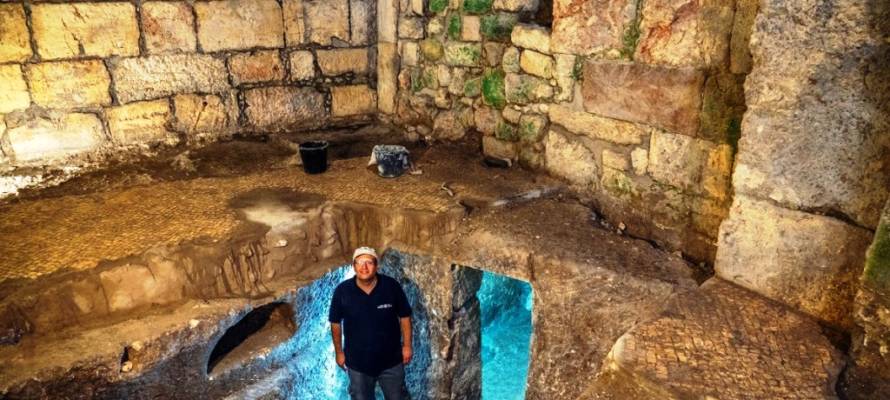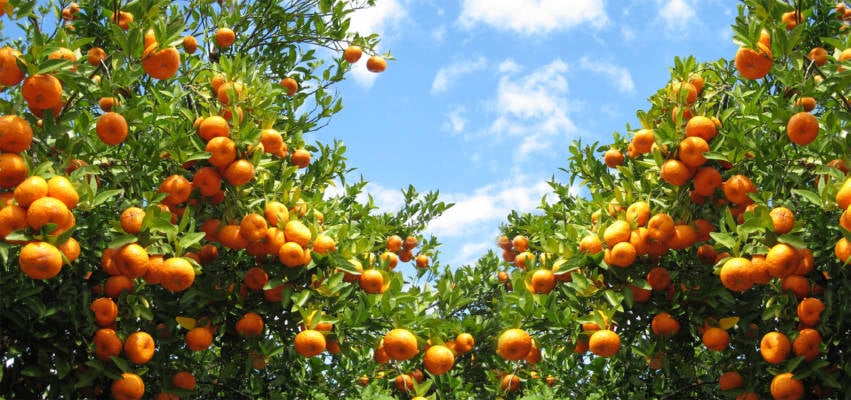A unique subterranean system hewn in the bedrock from the Second Temple period was recently discovered beneath an impressive 1,400-year-old public building near the Western Wall, the first time such a system has been uncovered in the area.
By TPS
In honor of Jerusalem Day, celebrating Israel’s reunification of its capital during the 1967 Six-Day war, the Israel Antiquities Authority (IAA) and the Western Wall Heritage Foundation have revealed new and impressive archaeological discoveries uncovered under the lobby of the Western Wall Tunnels.
Researchers believe that the complex was used by Jerusalem residents during the Early Roman period, prior to the destruction of Jerusalem and the Second Temple in 70 C.E. The system was sealed beneath the floor of a large structure from the Byzantine period.
Archaeologists do not yet understand why such efforts and resources were invested in hewing the subterranean system 2,000 years ago, while life was going on in the homes above-ground.
This system was exposed in excavations conducted by the IAA in the Beit Straus complex, beneath the entrance lobby to the Western Wall Tunnels
The system is composed of an open courtyard and two rooms arranged in three levels, one above the other and connected by hewn staircases.
At the entrance to the rock-cut complex, depressions were found that were meant to firmly fix door hinges and bolts. Round and square niches were carved into the walls along with small triangular niches for oil-lamps, as well as elongated carving for shelves. These findings allude to the rock-cut system being for daily use.
First Discovery of Its Kind
Dr. Barak Monnickendam-Givon and Tehila Sadiel, directors of the excavation on behalf of the IAA, noted that “this is the first time a subterranean system has been uncovered adjacent to the Western Wall. The question is, why were such efforts and resources invested in hewing rooms underground in the hard bedrock? Perhaps it served as a pantry for an overhead structure that didn’t survive, or as a hewn space that allowed for subterranean living.”
“The findings discovered in this excavation shed light on the daily life of the residents of the ancient city,” they explained.
The archaeologists found clay cooking vessels, cores of oil lamps used for light, a stone mug unique to Second Temple-era Jewish sites, and a fragment of a Qalal – a large stone basin used to hold water, thought to be linked to Jewish practices of ritual purity.
The rock-cut system was completely covered by a plain white mosaic floor of a monumental and extremely impressive public structure built at the end of the Byzantine period about 1,400 years ago, renovated during the Abbasid period about 1,250 years ago.
The frequent renovations of the structure and its destruction reminded one of the IAA team members, Michael Chernin, of a letter from the Cairo Geniza dated back to the 11th century C.E. regarding the renovation of a synagogue in Jerusalem after the earthquake of 1035 C.E. The renovation was undertaken thanks to a donation made by the Jewish community of Tyre, Lebanon, to the Jewish community of Jerusalem.
Toward the Fatimid period in about 11th century C.E., the structure was destroyed and its contents were covered until being exposed during the current excavations.
The Beit Straus complex is named for the philanthropist Nathan Straus who purchased the structure near the Western Wall at the beginning of the 20th century and turned it into a soup kitchen that fed the poor of the city.
The excavations at the site, renewed about a year ago, are being conducted as part of the work to prepare for a new tour.
Monnickendam-Givon said that the excavations at Beit Straus “reveal Jerusalem in its glory: Jerusalem of people, religions, and a variety of groups who lived, worked, built, and glorified Jerusalem throughout the generations.”
The discovery was made by students of a pre-military preparatory program in Jerusalem. The students have been integrated into archaeological digs as part of the IAA’s educational policy, which connects youth with their history.
REBUILD ISRAELI FARMS DESTROYED BY HAMAS - PLANT TREES!
ISRAELI FARMERS DESPERATELY NEED YOUR YOUR HELP
Hamas tried to destroy everything. Terrorists murdered 1200 innocent Israelis. Join us in planting 12,000 trees of life to honor the victims. Send blessing to the People and Land of Israel.
“…I will ordain My blessing for you…” (Leviticus 25:4,21)
JOIN OUR CAMPAIGN TO PLANT 12,000 NEW FRUIT TREES ACROSS THE LAND OF ISRAEL!




